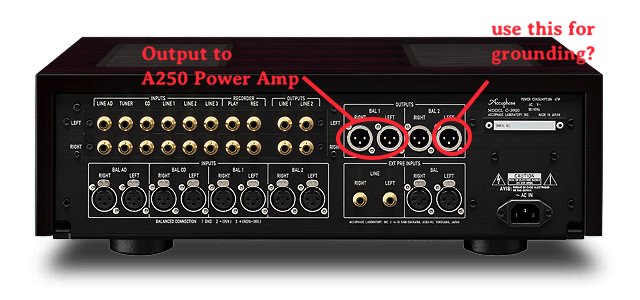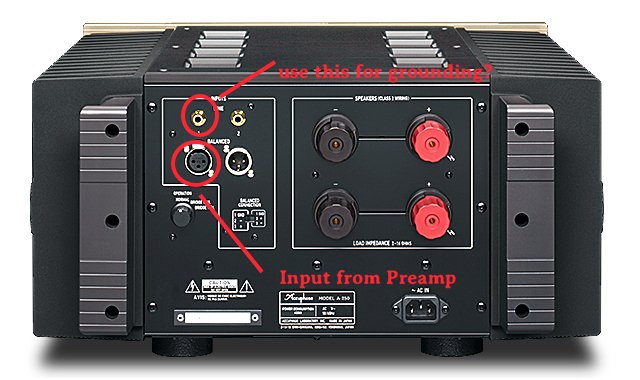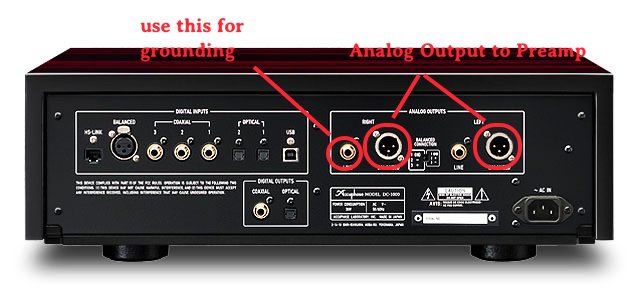Hi all,
I can give you my two-cents here, if you wish.
I have three Olympus Infinity Tungsten ground-boxes, long compared to the non-Tungsten version before buying.
The two models are in a very very different league; in my opinion/system the Tungsten version is a world on its own, WAY more lively and breathy than the other version.
Tungsten seems to provide generally much better results in terms of headroom (hope you guys are familiar with the concept of headroom, as it does not find much use among audiophiles). Simply said, Tungsten versions dramatically increase the level of UNDISTORTED dynamics, that is basically what headroom stands for.
Ideally they will perfectly fit the already well optimized, very high end systems. Other systems, more aggressive and forward sounding, may find the non-Tungsten preferable, as it does not “pop up the music out of the speakers” as realistically and dramatically as the Tungsten, whose thunder dynamics might end up being too much in such cases.
But again, I am referring to an imperfectly balanced, lower quality, higher distortion system, for which I believe the non-Tungsten model will still make sense and help a lot. In my system, I already had a very NON-harsh, rich sound, without fastidious peaks, but when I inserted the Tungsten units my system… EXPLODED. While retaining almost the same overall balance, the instruments simply jumped out of the speakers AND unexpectedly even lost some harshness I couldn’t hear! Yes, because even though the sound felt sweet, an undetected saturation was “smash-compressing” the peaks, giving that typical FALSE sense of dynamics that indeed is the exact opposite: in-your-face harsh peaks perceived as “dynamics”, while indeed they are just compressed! And that’s the reason why they are harsh. We take harshness for dynamics, headroom for compression, because high headroom sounds never harsh and aggressive so it feels like… “less dynamic!”. At the point that when we finally go to listen to the real orchestra, with that enormous dynamic range, we say “is that all? I have more dynamics at home..”. Even in my system I could realize how the overall soundstage had a “cap”, how a threshold of imperceptible saturation was limiting the headroom, canceling harmonics and creating dirt and confusion all at the same time.
The definitive test, the STEP BACK, was even more jaw-dropping than the step-forward: in a word, the sound was… DEAD! Yes, what before seemed already perfect now sounded dirty, bidimensional, flat, lifeless and unrealistic by comparison.
Just so that you can make best use of my words, I tell you what my system is comprised of:
- a 1930 engraved Western Electric 300b & 274/Telefunken EC8020 amplifier with no Graez bridge to have even higher headroom;
- two CV31 power supplies;
- Rullit Super Aero 12 field coil speakers;
- R2R DAC connected to a SACD transport via HDMI/I2S connection.
So an already sweet, non-harsh, natural, dynamic and rich sounding system that did not seem to need any ENTREQ’s.
But now, if I momentarily disconnect the three ground boxes, I fall asleep, the sound is just soporific by comparison, and what before sounded “natural and sweet” now it just sounds unnatural and reproduced!!!
Also, even though the tonal balance is retained, it must be noted that the preservation of harmonics achieved through the grounding creates a unique effect, something that not even a five digit engraved WE300b couple was able to give me: high frequencies become solid, and structured like in reality, all achieves more holographic detail but even more harmonic content, thereby an overall increase of THICKNESS is experienced.
But while this isn’t too hard to get in low frequencies, I never got such a huge impact on high’s. Now, an increase in overall thickness in my system (already VERY thick and rich) needs to be “handled with care”, talking about low frequencies. In fact I was only shopping for more air, breath, freshness at this time, NOT body and thickness at all, to balance my sound as best. In fact, as I’ve been trying both Eartha Olympus Infinity and Eartha Apollo Infinity earth cables to match ground boxes - both cables very effective and different - at this very early stage of break-in the Olympus seems a bit too much for my system. Yes, it has that extra harmonic richness and depth compared to Apollo that my system starts blurring the details, embedding them in a beautiful yet amber cloud of harmonics.
But don’t get me wrong, though, as I have a general rule: when ANY component does exactly what the Eartha Olympus cable does (bringing the sound stage deeper behind speakers, increasing harmonics content and decreasing harshness), it is simply a BETTER quality component. Full stop. End of story. But unfortunately hi-fi is not mathematics that repeats itself wherever, that you can get to the same result by simply adding same addendums: what works best in your system will NOT necessarily apply to mine. I learned that long time ago, when I built a guitar head amp clone of my 1964 Marshall JTM45 but with hi-end criteria, that should have destroyed the original with its poor components..
Well, that did not occur. The sound was so “well-mannered” and “natural” that had NO expression and life under my fingers...
So this applies to ENTREQ stuff as well. Many products, many ingredients, many needs, tastes, purposes.
Also, what I soon realized about ENTREQ’s products is that they change A LOT with break-in, so much that I changed conclusions several times and my current ones could be completely inverted again with time.
But I am quite sure (am I?) that the thinner, double linear solid core Apollo’s will remain a bit “leaner”, more fat-free than the richer Olympus.
Is that necessarily a bad thing? Not at all.
Now, probably the most amazing improvement I had with ENTREQ products was the CLEANUS extended by means of an Olympus Infinity Tungsten groundbox. That's to drain noise from the earth/ground of the home's electrical system connecting it in close proximity to the HiFi system. I literally fell off my sofa for the huge increase of headroom, undistorted dynamics together with a dramatic drop of harshness. Depth, speed and air between the instruments increased dramatically, but the specific “timbre COLOR” of every instruments was so realistic...so realistic that I don’t know if this can get any closer to reality. If that is the case, it means that, despite my system receives electricity through a big, screened cable by-passing ALL house utilities, it still receives and/or is unable to drain noise through the ground connection.
Another nice tweaking tool is the possibility to tide-up your results via the Everest or Peak4 screws. Again, none is better than the other.
The first is richer and sweeter, the second is brighter and faster, just to get us the gourmet minestrone as close as possible to our taste.
Buon appetito!
Fabio Apicella









